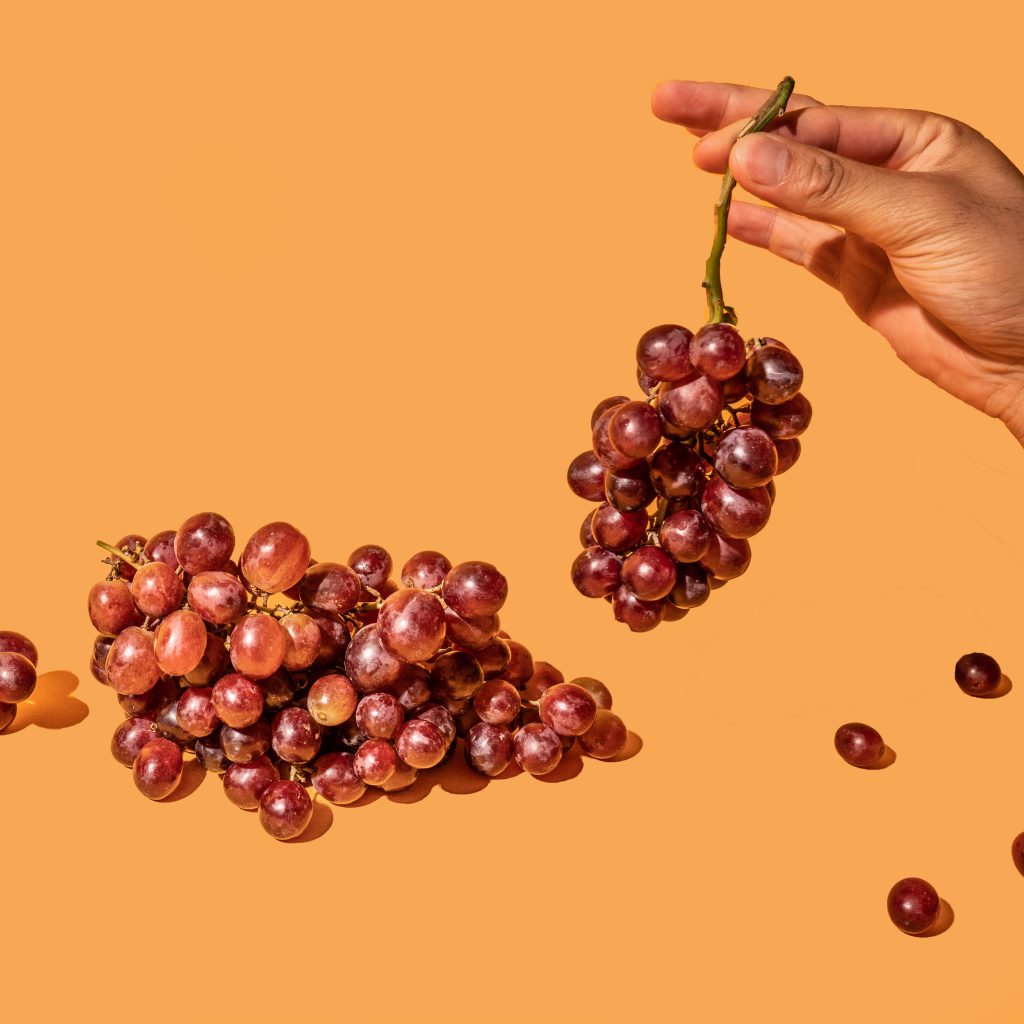Citrus, oak, and even notes of stone and smoke—grapes aren’t the only flavors you’ll taste in wine.

So, you’ve just purchased a new bottle of wine. Now, the fun part—drinking! A complete taste test would typically include sight, smell (aroma), and flavor (taste), but for the purposes of identifying common flavor profiles in red and white wines, we’ll just be discussing those you might discover on the palate—AKA when you take that first sip of wine.
RELATED: How to Taste Test a Bottle of Wine
According to Aldo Sohm, author of Wine Simple, the flavor spectrum of wines is essentially endless. But, there are five basic categories these flavor notes typically fall under:
- herbal (mint, thyme, rosemary, sage)
- fruit (red, dark, citrus, tropical)
- mineral (stone, smoke)
- earth (mushroom, tobacco, leather)
- and oak (vanilla, campfire bread)
The majority of flavor in wine comes from grapes and grapes alone, and flavor will change based on maceration and fermentation. But other factors come into play, too, like climate, soil, weather, temperature, vessel, and aging.
Get wine delivered with Misfits Market
Wine flavors aren’t just on the mouth. To start drinking wine, you’ve got to sniff first. The primary aromas in all wines are usually floral. But once you finally taste your wine, you’ll start to pick up on fruity flavors, whether that’s citrus fruit, stone fruit, red fruits, or dark fruits. But, some secondary and tertiary flavors can pop up now and again. These can come from factors like aging and in what vessel the wine is made in (like wine aged in oak barrels might have notes of vanilla), as well as the particular conditions a grape is grown under, known collectively as a wine’s terroir.
RELATED: Your Guide to Wines’ Sweetness Scale
Red wines generally have fruit forward notes of darker fruits that can be broken down into two categories:
- Red fruits, like cherries, strawberries, raspberries, cranberries, and red plum (yep, even though they’re technically stone fruits!). A pinot noir, for example, is known for its more red-fruited, high toned notes.
- And black (or blue) fruits, like most plums, blackberries, figs, and blueberries. Cabernet sauvignon, for one, is more known for its black- and blue-fruited notes.
Other common flavor notes in red wines: coffee, herbs, tobacco, and spice (like pepper and clove), and cedar.
For white wines, you’ll typically pick up more notes of lighter-fleshed fruits (apple, pear, and melon), stone fruits (peach and nectarine), tropical fruits (mango, papaya, and pineapple), and citrus fruits like lemon, orange, and tangerine.
Other flavors in white wine? Rich (almond) and sweet (honey) flavors. Again, the soil in which the grapes are grown plays a part in a wine’s flavor, too, so a soil with high minerality can result in a wine having notes of wet stone. (Yes, really!)
White wines will also feel juicier and more acidic on the palate, compared to the dry mouthfeel thanks to tannins in red wines. At the end of both reds and whites, you might pick up on spice on the palate, like white peppercorn, or herbaceous flavors, like green pepper or fresh herbs.
When it comes to picking a wine with flavors you like the most, your best bet is to think of fruits and flavors you already like. If you like apples, a chardonnay might be a good place to start. If you’re a fan of cherries and robust flavors, you might want to pick up a bottle of malbec.
Learn even more about Red Wines and White Wines at Wine Enthusiast.
